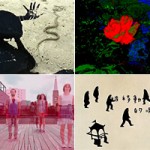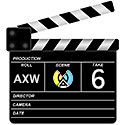ROSE SELAVEE; Coleen Fitzgibbon; TRT: 5.00
A rose is a rose is a rose in saturated color.
The experimental film Rose is a meditation on Shiva in the aniconic garden surrounded by animals. The garden reflected in 1080HD.
You’ve seen a lot of changes in the experimental film world, what do you think is important as a filmmaker.
There were less filmmakers when I started in the early 70’s as the technical aspects of handling film and getting an image was more difficult; digital technology has opened up moving and still images internationally to people who would never before had the resources or education to make films. The revolution in digital cameras, phone and editing is comparable to Renaissance painting when access to pigments became internationally available. More people making films not only increases information and art but makes for better art as collective thought increases exponentially.
What advice would you give someone coming up?
Follow your interest/intuition; learn everything you can; see everything you can. Look objectively at how to fund your projects and who to work with. Always inform yourself about new technologies or have enough money to hire someone who does.
How did this film come about?
Rose and Rose SeLavee were born out of curiosity – I wanted to see what the iPhone could do and I like gardens and sitar music.
How do you compare making an optically printed film like some of your other work, versus a straightforward shot like in Rose?
Rose took a week to make, FM/TRCS (1974, 16mm optically printed A/B rolls) took 6 months. There was no digital in the early seventies. I was not technically inclined when I first used the optical printer, but it was a good challenge and has always stayed in my mind while learning new equipment to make movies.
How did you chose the soundtrack?
I like the meditative quality of Indian music and have been thinking about awareness. I don’t think I had heard sitar music until the Beatles. I still practice transcendental meditation.
Is there anything else you want to say about your creative process with film or video?
Movies or moving images are related to how we form thoughts visually that are too complex for written or verbal language. If you could define everything by speech or writing there wouldn’t be a need for images; what’s the Chinese proverb, “one picture is worth a thousand words?”
Movies often combine both language and images into a story. A story is a series of images in time that create the idea that we have arrived at an understanding; often it’s a mirage of comprehension. Kuleshov who influenced Eisenstein said that the placement of single images cause the brain to invent a narrative.
Experimental films and docs are usually financial black holes so after making films from the early seventies to the early eighties as an artist/filmmaker I decided to try working commercially in tv/films first as a camera woman and then as a producer, as those jobs were available then. This gave me a chance to work collectively instead of working alone and to increase my technical knowledge; also I was able to use the money to fund my own films.





